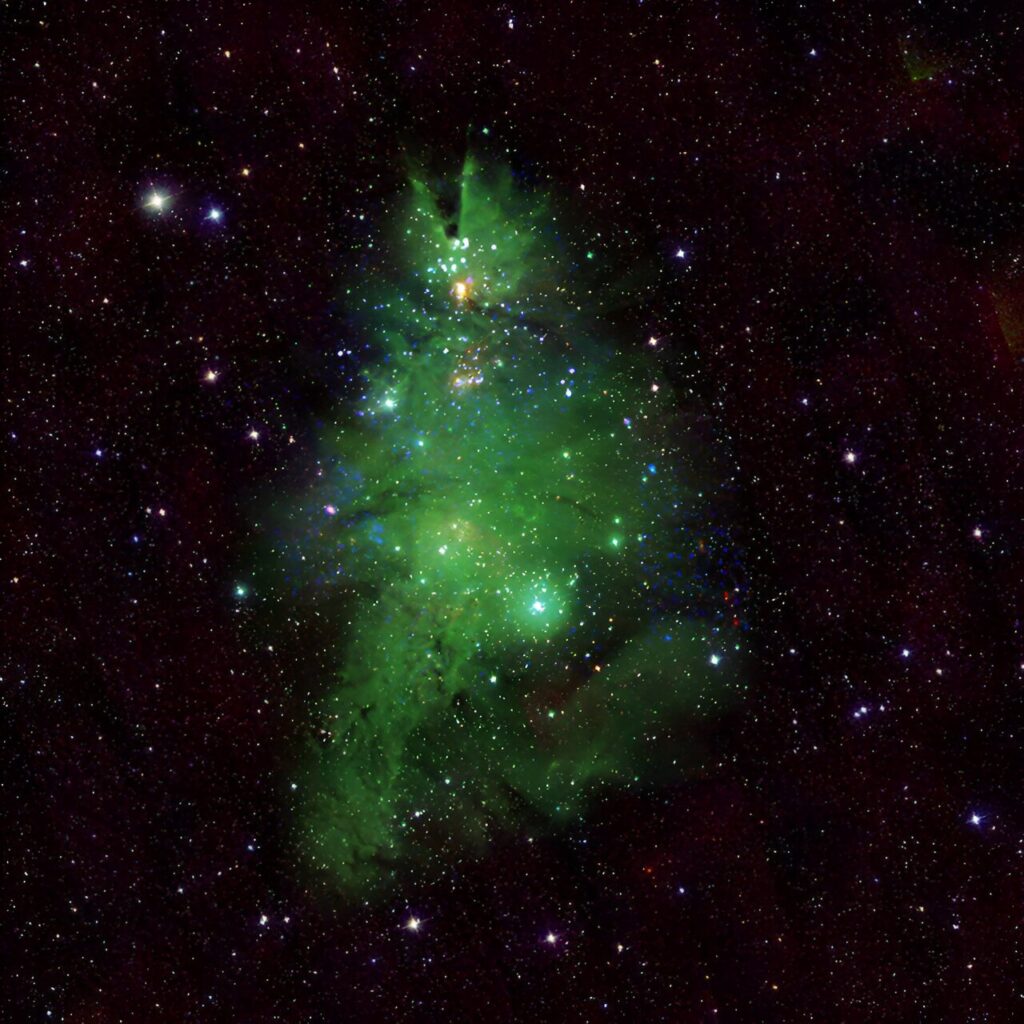Astronomers have obtained an image of the star cluster NGC 2264, which turned out to be extremely similar to a Christmas tree. In fact, it is a complex image based on both data from instruments operating in the optical range from Earth and those obtained from the Chandra X-ray Space Telescope.

Christmas tree in outer space
A group of American astronomers have made a Christmas present for everyone who loves stellar science. They have obtained an image of something that looks very much like a Christmas tree hanging far away in space. In fact, this is the star cluster NGC 2264, which is located at a distance of 2500 light years from us (so actually this particular Christmas tree was installed in outer space long before advent of Christ Himself).
The green color is the remnants of the gas and dust nebula from which the cluster was formed, and the bright lights are young stars, ranging in age from 1 to 5 million years. As for their mass, it is quite different. Some of the stars in the image are ten times smaller than our Sun. Others weigh seven times as much.
The image itself is synthesized. The resemblance to a Christmas tree is created not so much because of the shape of the cloud itself, but because the color green was chosen to represent it, and it was rotated for the presentation.
How the image was created
Despite the fact that the “Christmas tree” is a bit fake, the story of how this image was created is impressive. To make it, scientists combined data from several telescopes operating in different parts of the spectrum.
For example, the optical data came from the National Science Foundation’s 90-centimeter WIYN telescope on Kitt Peak. They are responsible for the green color of the “Christmas tree”. The stars in the image are based on data from the Two Micron project, which observes the sky in infrared light.
All this data was supplemented with the results of observing the NGC 2264 cluster in the X-ray range. They were obtained thanks to the Chandra space telescope. It is this telescope that is best able to see flares that occur on young stars. Some of them are similar to those that occur on the Sun and are associated with the activity of magnetic fields. Others appear because gas occasionally obscures these stars from us. Based on materials: phys.org

